Featured Exhibits
Sign up for the Newsletter
Advertise on ParachuteHistory.com
Disclaimer
Privacy Policy
About
Ballute
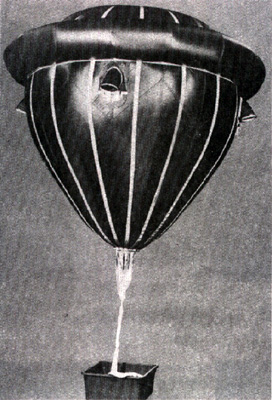 The Goodyear Company designed the ballute parachute. It looks very much like a boxer's punching bag. A burble fence is a toroidal shape at the meridian of the bag portion.
The Goodyear Company designed the ballute parachute. It looks very much like a boxer's punching bag. A burble fence is a toroidal shape at the meridian of the bag portion.
The burble fence ensures that the flow separates uniformly. This eliminates any destablizing forces caused by irregular votex shedding. The inverted conical shape in front of the burble fence also helps to stabilize the parachute.
The skirt is narrower than the equator and causes the air to collapse uniformly into the low pressure area behind the body.
There are four ramair scoops to provide for proper inflation. At one time, onboard inflation gas canisters ensured positive inflation. These were abandoned because the ramair scoops were simplier and provided the same function.
The ballute was designed for high altitude. A ballute parachute was used on the Gemini back-up ejection seat. It had an upper limit of Mach 4 at 80,000 feet.
A ballute parachute is also used as a bomb retarder for the Mk 82 bomb.
The ballute has been tested up to Mach 10. For Mach 3-6, the weight and volume of the ballute is greater than a comparable hyperflo parachute.
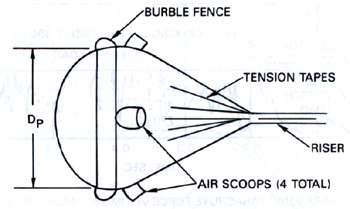
Conceptual Drawing of a Ballute Parachute.
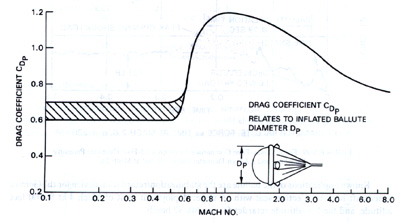
Drag Coefficient versus Mach Number.
The drag coefficient, CD, has a maximum of 1.2 at Mach 1.0. CD then drops off slowly as Mach number increases further.
Ballutes have been constructed from thin plastic for high altitude and low speed deployments. They are made from a high temperature, silicone-ceramic wire mesh for hypersonic deployments.

Flowfield Over of a Ballute Parachute.
The ballute inflates quickly and uniformly. The opening force coefficient, CX, is 1.93 for a 5.5 ft diameter ballute at Mach 2.6 and dynamic pressure of 220 PSF. CX is 1.37 for a 3 ft diameter ballute at the same conditions. The smaller ballute provides a steady final drag load of 729 lbs. The larger ballute has about the same average drag of 720 lbs, but fluctuates between 500 and 1000 lbs.
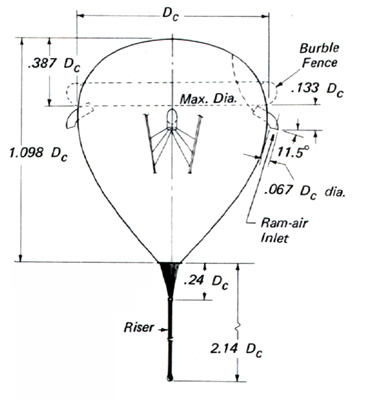
Schematic Drawing of a Ballute Parachute.
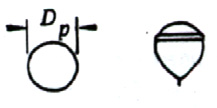
Planform and side view of a Ballute Parachute.
[Products] | [Services]
[Join Our Mailing List] | [Advertise on ParachuteHistory.com]
[ ]
[Disclaimer] | [Privacy Policy] | [About]